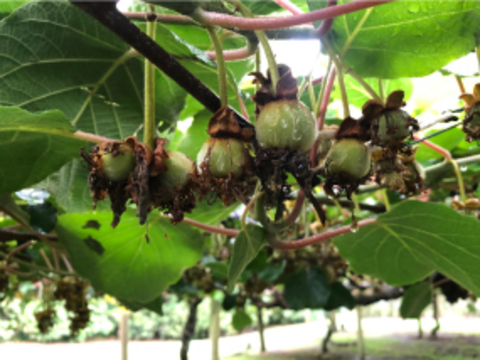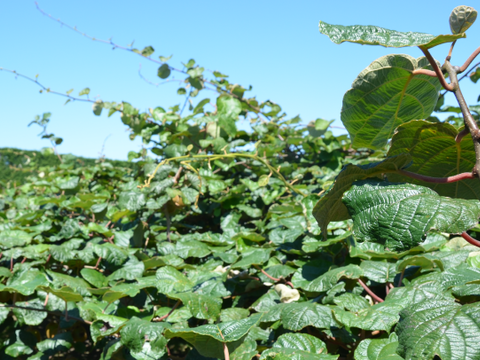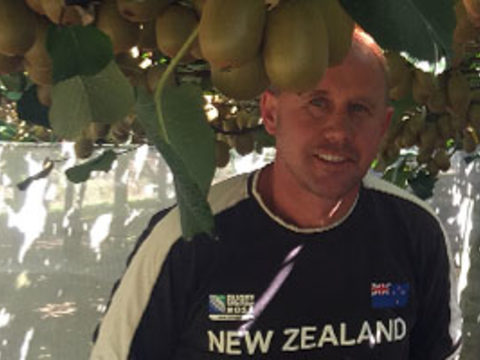Operation Pollinator™ in New Zealand kiwifruit

Operation Pollinator™
Operation Pollinator™ is a global biodiversity programme developed by Syngenta, which is active in over 40 countries to promote the health and wellbeing of bees and other pollinators given their essential role in agriculture and nature.
In New Zealand, the first phase of Operation Pollinator™ has been completed, with plantings on three kiwifruit orchards designed to enhance pollinator diversity and attract beneficial insects.
In late 2018, Syngenta partnered with Plant & Food Research to investigate ways to improve the range of pollinators in New Zealand’s kiwifruit orchards. Previous work by Plant & Food Research had identified a potential pollination deficit in kiwifruit, with possible implications on fruit quality that could be addressed by broadening the range of pollinators present in the orchard at flowering time. (Kiwifruit Journal, February-March 2020).
Pollination of kiwifruit currently relies mostly on managed honey bee hives, but unmanaged pollinating insects such as native bees, wasps, beetles, bumble bees and flies can also have a role to play. Other insects can also be beneficial such as pest predators and parasitoids, and invertebrates that break down organic matter.
A wide range of plants, both exotic and native, have been recommended to provide habitat for bees on farms. Most of these initiatives have been focussed on honey bees, rather than native or introduced wild pollinators, and have not taken into account the potential to become hosts for pests. Operation Pollinator™ aims to provide accurate information on native plants based on science that encourage beneficial insects, without attracting pest species.
In 2019, a comprehensive insect survey commenced in the kiwifruit producing regions of the Bay of Plenty, Hawkes Bay, Waikato and Kerikeri. Council amenity plantings of native trees and shrubs chosen to be representative of the designed perennial plantings envisaged for orchards, were then surveyed for insect presence.
Data was collected by Plant & Research scientists over the flowering period using a combination of observation and sample collection, to identify known kiwifruit pollinators and pests. This information was combined with an extensive literature review by Plant & Food Research to develop a species interaction matrix, demonstrating the complex interactions between pollinators and native plants.
Trial planting lists developed
Using this data, the scientists developed evidence-based planting lists for different regions. Suitable plants were then chosen based on local conditions and availability, and with a long flowering period to provide a habitat to encourage wild pollinators to establish. At the same time, avoiding plant species known to support the complete lifecycle of passion vine hopper, a key pest of kiwifruit.
Trial orchards established
Two kiwifruit orchards in the Bay of Plenty were selected to participate in the Syngenta Operation Pollinator™ project. A survey was conducted to establish a biodiversity baseline for the sites, which found that flower visitors to kiwifruit were almost exclusively honey bees. A third site in Kerikeri has since been included.
Using the designed planting lists, locally sourced species were planted in September 2020 in unused orchard areas, close to the canopy. These plants are now establishing and growing well, with some plants already flowering.
A key benefit of biodiversity planting on unproductive areas of kiwifruit orchards is spreading the pollination risk by reducing the reliance on honey bees. Additional benefits can include reducing the costs associated with maintaining the unproductive areas (e.g. mowing, spraying etc) and in some cases also providing erosion control.
Other environmental benefits can include the establishment of green corridors to introduce biodiversity into the orchard, increased bird life, and plantings that are aesthetically pleasing.
What next?
The next phase of Operation Pollinator™ will be the monitoring of trial orchards for pollinators and beneficial insects, as well as pest species. This will help to confirm and/or modify the designed planting lists. The aim is to provide kiwifruit growers with confidence they can enjoy benefits from biodiversity, without risk to their orchard.
Acknowledgements
The authors wish to recognise the work of Beneficial Biodiversity Team Leader at Plant & Food Research - Brad Howlett, for leading the research on this project and the growers who have provided trial sites.
For more information contact Syngenta on 0800 333 336











